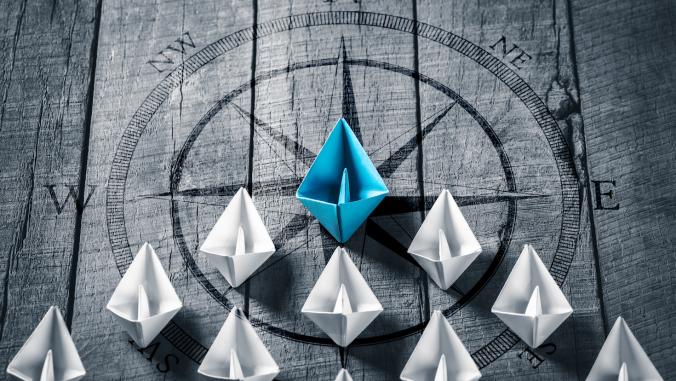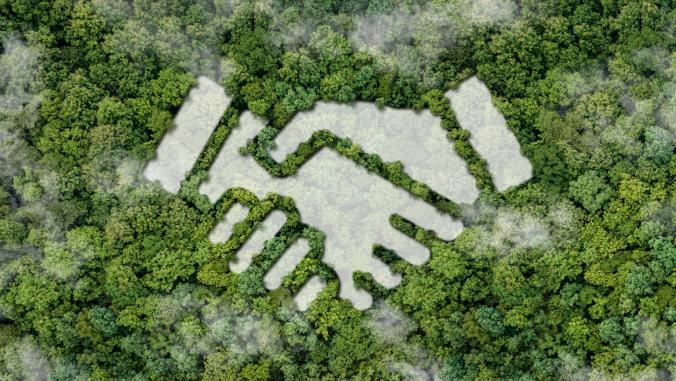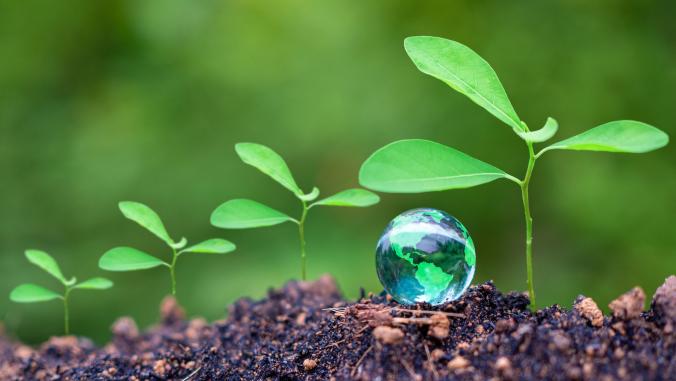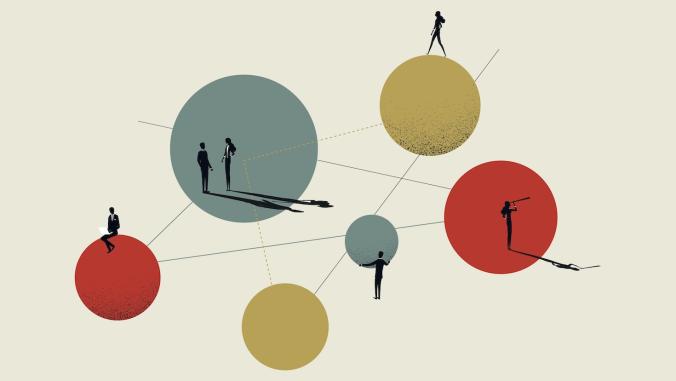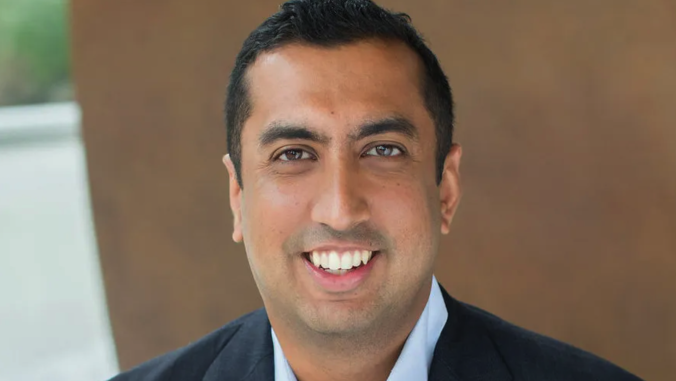A unique culture and spirit: How Quantis empowers millennials, avoids hierarchy
The consultancy's CEO Emmanuelle Aoustin shares her insights on creating a 'incredibly positive, calm yet dynamic' environment in which to nurture innovation.

With eight offices across Europe, North America and South America, Quantis sets itself apart from other consultancies through its unique culture based on minimal hierarchy and infused with a dynamic and collaborative spirit. To feed this culture, the entire group comes together once a year for a week-long, off-site seminar. Quantis has been growing in staff size by 25-30 percent a year for the last four years with no intention of slowing down.
Quantis CEO Emmanuelle Aoustin shared her insights about leading an organization of 100-plus staff to pioneer a new approach to sustainability and culture, both for themselves and their clients. This interview was edited for clarity.
Shannon Houde: Tell me a bit about your history with Quantis.

Houde: After a few years with Quantis, you transitioned from director of Quantis France to become the group’s CEO. How did you plan to lead differently as CEO?
Aoustin: As soon as I stepped into the role of CEO, I took time to reflect on the role to clarify what that role should be and how I — with my talent, expertise and experience — could support the company and its people. I didn’t take the title of CEO for granted. It’s not a "position," it’s a role with its specific responsibilities.
Last year, at a [World Business Council for Sustainable Development] dinner with CEOs and other leading sustainability stakeholders, someone asked what I did at Quantis. They asked, "Oh, are you behind the scientific excellence of the deliverables?" And I quickly responded, "No, I am only the CEO." The table laughed until they realized that it was genuine. I don’t see my role as bigger, "on top of" or validating and deciding everything. The magic happens when we work in collective intelligence.
Some things were really clear right from the start:
- I wasn’t the expert in the house. There were so many others in the company that had expertise in environmental assessment, business development, quality delivery, etc. My role was not going to be more expert than the team that was in place.
- I did not want to be the bottleneck in decision making. This was something that I did not appreciate in former experiences: the hierarchical bottleneck. I was convinced that there had to be another model of working. Quantis was growing, we had multiple locations, Paris, Boston, Lausanne — and since have opened in Zurich, Berlin, Milan and Bogotá. We needed to be quick and agile to answer clients as well as respond to the complexity of the rapidly evolving sustainability agenda. I didn’t want to be the go/no go decision maker for each new service or innovation.
- I wanted to create the conditions for the team to thrive and strive. My talent is in leadership through the lens of vision and strategy, as well as in engaging and motivating teams. I’m privileged to lead a team of passionate and talented individuals.
Houde: What is so unique about Quantis’ organizational culture?
Aoustin: Quantis is different from traditional organizations in many ways: It’s a living organism where we nurture the power of collective intelligence. Teams self-organize to answer client needs, solve issues or seize opportunities — based on expertise, preferences and availability.
It builds on a type of advice-decision process that avoids hierarchical top-down decisions. By seeking out individuals that are skilled in a specific area or that need to provide inputs for a specific decision, it renders decision-making smarter and more efficient.We strive to create a safe space where talents are encouraged and recognized for the initiatives they take, to answer client needs, to build a better Quantis and to build their professional journeys.
We strive to create a safe space where talents are encouraged and recognized for the initiatives they take, to answer client needs, to build a better Quantis and to build their professional journeys. And our "Quantis Spirit" fuels it all.
Houde: What is this thing you call the "Quantis Spirit"?
Aoustin: What we call the Quantis Spirit is how we describe our culture. Culture is something you feel, experience and share, not something you can touch or truly describe with words. It’s the Quantis Spirit! It radiates from the inside out. It's our way of being with each other and working together that transpires to our clients and our partners. We say we work on some pretty serious issues, but we don’t take ourselves seriously. We have built an incredibly positive, calm yet dynamic environment for all of us so we come to work with a sense of well-being and motivation.
The Quantis Spirit is precious and needs care and attention, especially as we scale, open new offices and integrate new talents. The culture is something that our people, clients and partners experience through the interactions with our talents, the website, "Quantis has talent" video or our 1-on-1s or by how we share our news and views on social media.
Houde: What are the challenges of leading in a unique organizational culture?
Aoustin: Here are three.
- Being creative: There are some references out there but there is no roadmap for the type of fluid organization, management and culture we want to build, so we need to think out of the box about everything from how to give performance feedback to what’s the best office layout to complement how we work. There is no one-size-fits-all model.
- It’s a journey: Quantis is growing so this means we must stay agile, constantly adapting to the needs of the market, our clients and especially our people. We don’t have all of the answers yet, but we are working on it.
- Learning. It feels like it is still an open field. I want to learn from and get inspired by other like-minded leaders who have driven organizational change.
Houde: What is the secret sauce for creating a unique non-hierarchical culture where millennials will thrive and stay?
Aoustin: While in general millennials entering the workforce have opened us all up to a different way or working, communicating and collaborating, I would say that Quantis was born for millennials. What they are expecting, we have worked hard to create since the beginning of Quantis over 12 years ago. The ingredients to the secret sauce are valid for everyone at Quantis. Here are my top six ingredients, not in order of importance:
- Authenticity.
- Care, support, compassion: Each person should feel appreciated and valued as a person and as a contributor to the mission.
- Passion and commitment: There is a true passion for the mission "to guide top organizations to define, shape and implement intelligent environmental sustainability solutions." In essence, to save the world and support clients in playing their role in this.
- Dynamism, energy, excitement: There is always a very high level of energy in our offices. It feels like a beehive, always lots of new ideas, people buzzing around talking and collaborating. In fact, today we are hosting a WWF workshop here in Paris. There are always lots of people coming and going. We love the energy.
- Partnership & transparency: We strongly believe that a large share of the road to sustainability is building multi-stakeholder solutions. We like to be a convener and facilitator for change between amongst industry/sector peers, suppliers, and other stakeholders across the value chain.
- Creativity & innovation: Innovation is about being on top of things so we can bring new ideas, new solutions to the table. There is so much advancement and evolution in sustainability so we need to constantly be on the leading-edge side of the journey to provide solutions to the world’s biggest problems. We believe that customized solutions are those that are going to work for our clients. We dedicate the time and effort to understand the specificity of each client, what they need, and design a bespoke program for them. Support multi-stakeholder and multi-functional teams — sustainability solutions need talents up and down the hierarchy and across functions, departments and countries.
Houde: What are the top three things that motivate your millennial staff?
Aoustin: Sometimes it feels like we are all millennials. Even the 50-year-old set on the teams can seem younger in spirit than someone would in a more formal corporate setting. When I asked the millennials sitting next to me what motivates them, they said:
- Purpose: To have a job that is purpose-led, the "why" they wake up in the morning.
- Impact: They want to know that they are having an impact, something that is solutions-oriented, not just pointing out the problem
- Collaborative culture: You get help and support from anyone anytime, you are never stuck, you raise your hand and you will always find a solution within the company without hierarchal barriers or procedures.
- Flexibility: In the work pattern, with time, organizing your day, working from home.
Houde: So I’ve heard the team rave about this annual seminar, but why and how do you manage to do this for a week every year?
Aoustin: It’s indeed the cherry on the top of our (culture) cake — it brings it all together — the culture and the people. The idea that we needed an annual one-week get-together was clear to me early on in my CEO role, and it has proven to be even greater than I expected. It has immense value. All of the people love it and say it is the best moment of the year. I fully agree! Here’s why I kicked this off:
- To enhance the collaboration by building real connections between people — beyond the digital meetings. It creates real connections, humanity, empathy and understanding.
- To put the Quantis Spirit on stage once a year. Giving the organization the time, care and attention it deserves. It’s a special treat — a moment to take a deep breath and collectively re-center ourselves.
- It is also a key element for training and implementing change. It’s learning from within, sharing our knowledge and experience, where most of the workshops are led by the team.
Houde: How does your unique culture give you a competitive advantage — as an employer brand and with clients?
Aoustin: It helps in these areas:
- Talent turnover [is lower]. People like to stay with Quantis. We have a large number that have been with us since the beginning. We have an extremely low turnover rate.
- The passion that transpires. This is what people can see from the outside, and it’s what our partners experience and value.
- It is part of the service. It’s not tangible but it is our clearly our embedded competitive advantage.
- Our relationships with our clients and partners: Everything is more simple, genuine, transparent and more agile.
Houde: What learnings from your journey could you share with other sustainability leaders who want to influence culture change within their organizations?
Aoustin: Here are three concluding thoughts.
- Start supporting, stop controlling: Sustainability and innovation go hand in hand and we need to foster creativity in order to reach our corporate targets and stay within Planetary Boundaries. Only a safe space where taking initiatives is valued together with innovation and creativity can bring solutions at the right speed. Be the one that creates that culture and holds that space in your company. Experiment with the "advice decision-process."
- Collective intelligence: Support multi-stakeholder and multi-functional teams — sustainability solutions need talents up and down the hierarchy and across functions, departments and countries. Bring your stakeholders inside your teams — they’ll bring expertise, benchmarking and some extra challenge, too. Create powerful teams.
- Optimism and empathy: Explore small steps for big changes. Use positive language, implement a feedback culture, recognize people when they help others and build a collective optimistic vision and mission. Optimism and care are fuels to creativity and efficiency.

